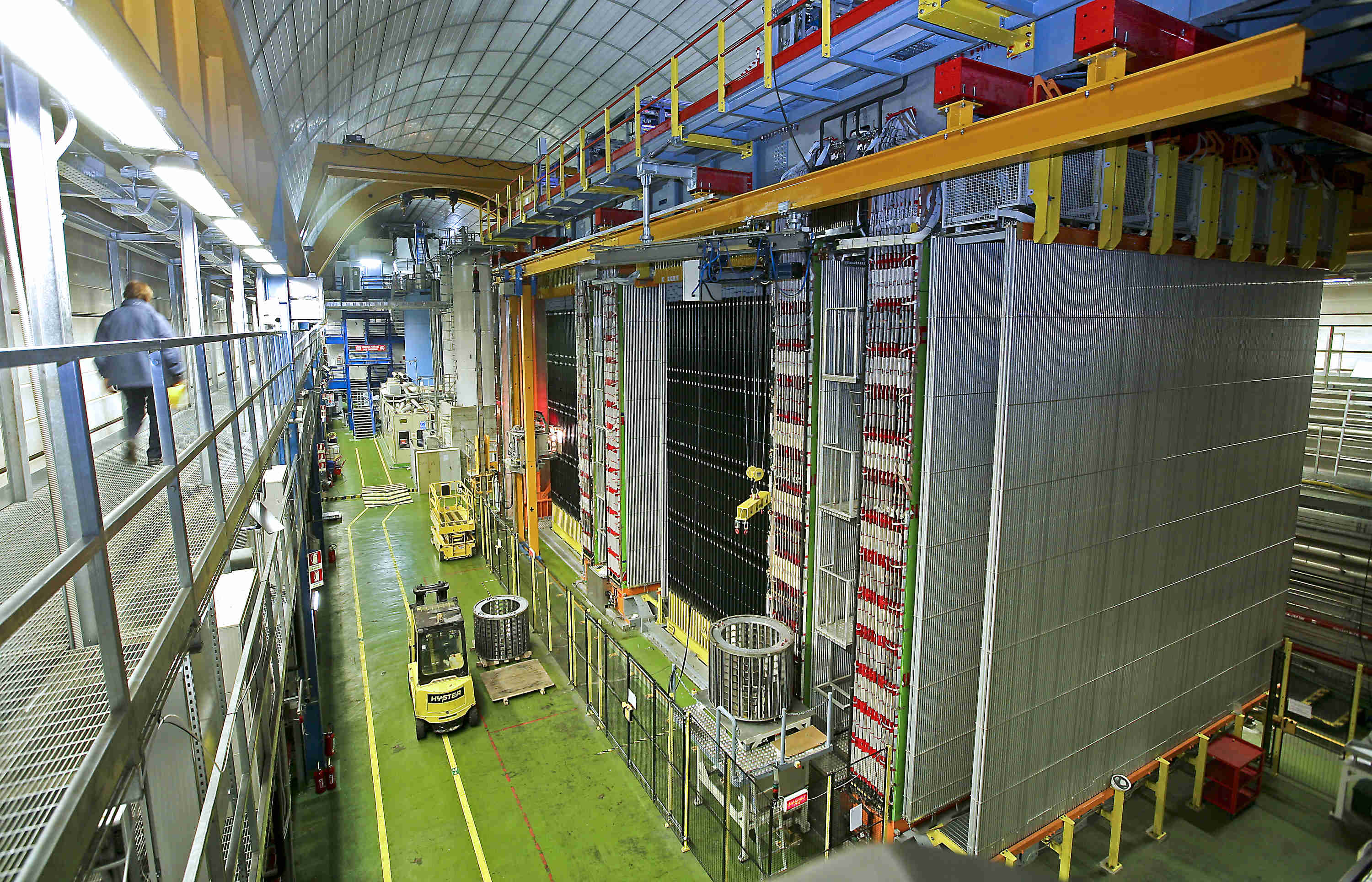
The OPERA international experiment at the INFN Gran Sasso Laboratory (Italy) has detected a fourth tau neutrino. The neutrino indeed started its flight at CERN as muon neutrino and, after travelling 730 km through the Earth, it arrived at the Gran Sasso laboratory transformed into a tau neutrino.
This important result was announced today during a seminar held at the Gran Sasso Laboratory.
According to the head of the international research team, Giovanni De Lellis, from Federico II University and INFN in Naples, “The detection of the fourth tau neutrino is a very important confirmation of the previously seen events. This transition is now seen for the first time with a statistical significance exceeding the 4 sigma level: beyond the scientific jargon, this is equivalent to say that for the first time we have observed the extremely rare oscillation phenomenon of muon neutrinos to tau neutrinos, the aim of the OPERA project.” “If other tau neutrinos will be found in the data still to be analysed, an even higher significance level could be achieved. The important result reported today was made possible thanks to the dedication of all the researchers involved in the project”, De Lellis finally says.
The international OPERA experiment (involving 140 physicists from 28 research institutes in 11 countries) was designed to observe this exceptionally rare phenomenon. Neutrino oscillations have been a poorly known phenomenon for several decades. More than 15 years ago, it was demonstrated that muon neutrinos produced in cosmic-ray interactions arrive at the Earth fewer than expected. The result reported today explains why: the “missing” neutrinos are indeed those muon neutrinos oscillating into tau neutrinos.
The OPERA experiment with the CNGS (CERN Neutrinos to Gran Sasso)
Neutrinos produced at CERN, Geneva, travel toward the Gran Sasso underground laboratory. Thanks to their extremely small probability to interact with matter, after travelling for about 730 km through the Earth, neutrinos arrive unperturbed at the OPERA detector, a giant of about 4000 tons, with a 2000 m3 volume and nine million photographic films: here all the particles that are caught get observed. There are three kinds of neutrinos in nature, named “flavours”: electron, muon and tau.
OPERA looks for tau neutrinos knowing that all those leaving CERN are muon neutrinos since they are on purpose produced that way. If neutrinos of a different flavour are detected, this is a proof of the oscillation occurring during their 730 km flight. After the first neutrinos arrived at the INFN Gran Sasso laboratory in 2006, the experiment gathered data for five consecutive years, from 2008 to 2012. The first tau neutrino was observed in 2010, the second and third ones in 2012 and 2013, respectively. Scientists will complete the analysis of all the data collected, searching for other tau neutrinos to achieve the ultimate significance in the appearance of tau neutrinos from the oscillation of muon neutrinos.
INFN Press office - +39. 06 6868162 – This email address is being protected from spambots. You need JavaScript enabled to view it.







